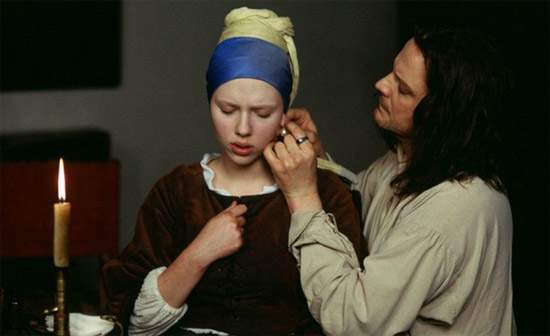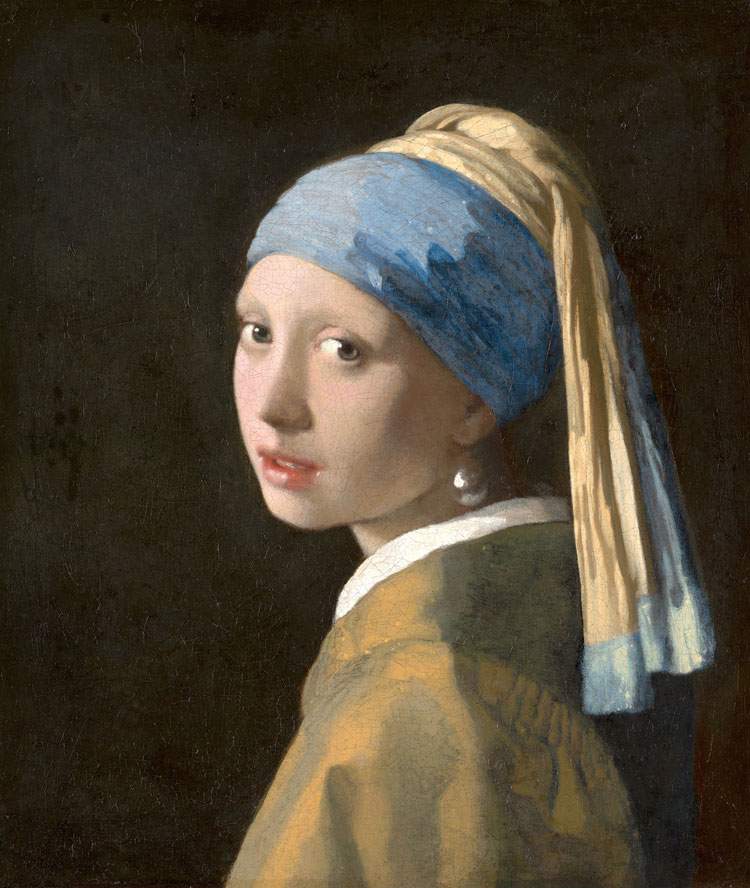Who was really Johannes Vermeer's Girl with a Pearl Earring?
Tracy Chevalier ’s novel and Peter Webber’s subsequent film, starring an outstanding Scarlett Johansson as the protagonist, helped bring the work into the public imagination. Last year’s controversial and controversial exhibition in Bologna, curated by Marco Goldin and held at Palazzo Fava, brought it to Italy for the first time. But who really was the Girl with the Pearl Earring (or the Girl with the Turban as you might call it) painted by Johannes Vermeer around 1665 and now housed at the Mauritshuis in The Hague?
 |
| Scarlett Johansson plays the Girl with the Pearl Earring along with Colin Firth as Vermeer |
This is a question that many art historians have attempted to answer. The main problem lies in the fact that the documentation on the painting is very poor (as, for that matter, is the biographical information on Vermeer), and no contemporary source is able to tell us who the model was who posed for the painting, or whether the painting depicts a real person who existed and is therefore a portrait. Meanwhile, it must be said that this is an unusual work for Vermeer: in his already sparse output, there are very few paintings with half-length subjects emerging from a dark background, and this is probably the first.
 |
| Johannes Vermeer, The Girl with the Pearl Earring or The Girl with the Turban (c. 1665; oil on canvas, 44.5 x 39 cm; The Hague, Mauritshuis) |
Partly because of this unusualness of it, one naturally wonders if that girl is someone Vermeer knew or had any sort of relationship with, or if it is instead an idealized face. One of the first scholars to ask the question was Pieter Swillens, a Dutch art historian who, in 1950, published the first comprehensive monograph on Johannes Vermeer. It was in that publication that Swillens offered his interpretation of the painting’s subject. In his important work, the historian first of all debunks some assumptions that he thought were unfounded, namely those that wanted the Girl with a Pearl Earring to depict a daughter of Vermeer: there would not be sufficient evidence, and moreover there are no portraits of the painter’s daughters left. Having made this premise, Swillens asserted that the main characteristic of a portrait (and, we would add, of those produced during the seventeenth century in the Netherlands) is the faithful resemblance to the subject to be depicted: while he could not, of necessity, judge how closely the Girl with a Pearl Earring resembled the original subject, the scholar asserted that there are elements in the painting that can lead one to consider it a portrait, chief among them the fact that Vermeer would have had no intention of producing a purely aesthetic work. This is because, according to Swillens, the girl’s face would not present such features as to suggest idealized beauty. Two of the keys to interpretation would be movement and expression: a natural movement, far from aestheticizing, and an expression, with the eyes following the painter and the mouth slightly open, that would show lively interest: these would thus be clues to the fact that the girl could be, indeed, a real girl.
Swillens’ theories were completely refuted a few years later, however. The American Arthur Wheelock, a specialist in seventeenth-century Dutch painting, argued in his 1981 monograph Jan Vermeer that the Girl would be an idealized study: the exact opposite of Swillens’ claim. This theory would later be followed by several other scholars. Such as Walter Liedtke, who accepted the hypothesis in his 2001 work Vermeer and the Delft School, but at the same time rejected the possibility, considered plausible by Wheelock, that Vermeer was inspired by classicist currents. Or like John Montias, who, in his 1991 book Vermeer and his milieu, also argued that, taking the 1665 dating hypothesis at face value, it would be very difficult to think that either of his two daughters had posed for the painting given that, at the time, the older one was only 12 years old.
But what are the reasons that would suggest an idealized portrait? Some of these are to be found in certain elements of the painting. Such as the turban worn by the girl: it was a very expensive headdress that was imported from Turkey, which was not part of the usual clothing of a seventeenth-century Dutch girl. We could make the same kind of reasoning for the pearl, another luxurious accessory. And let us then consider that the turban’s hue is an ultramarine blue, a color that in Vermeer’s time was obtained from lapis lazuli, and had very demanding costs. So these are clues that lead us to think that the work was commissioned by a wealthy client.
There are other important reasons as well. In an inventory, dating from 1664, of the property owned by a certain Johan Larson, a sculptor active in The Hague, there was mention of een tronie van Vermeer, or “a tronie by Vermeer.” The word tronie, literally “face” or “face” in 17th-century Dutch, denoted a particular genre of painting, which has no equivalent term in Italian. A tronie was a painting depicting a human face and was intended to study expressions, poses, movements, looks, physiognomies, or it also served to depict common subjects, such as soldiers, young commoners, gypsies, and so on. Often tronie were also an expression of a particular acquired status, and were commissioned to make explicit in some way the social position of the patron: a certain type of clothing, a particular piece of jewelry, a luxury object became status symbols to be shown in paintings as well. In seventeenth-century Holland, the tronie genre was very popular and had a thriving market: these paintings very often were not even commissioned, but were more simply painted and sold on the market.
We do not know whether the painting mentioned in the 1664 inventory is actually the Girl with a Pearl Earring because we do not have more information about it, but we can say that today much of the criticism agrees that the most famous painting made by Johannes Vermeer is nothing more than a tronie. It must be said that real models often posed for tronies. And no one can know whether the Girl with the Pearl Ear is a mere figment of Vermeer’s imagination, or whether there was actually a girl who posed for him. Perhaps it is also because of this impossibility in being able to determine who that girl really is that the painting has become so fascinating.
Warning: the translation into English of the original Italian article was created using automatic tools. We undertake to review all articles, but we do not guarantee the total absence of inaccuracies in the translation due to the program. You can find the original by clicking on the ITA button. If you find any mistake,please contact us.



























